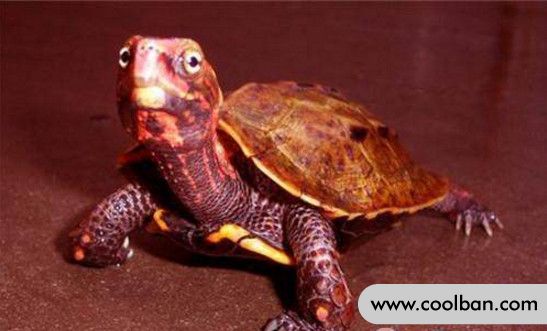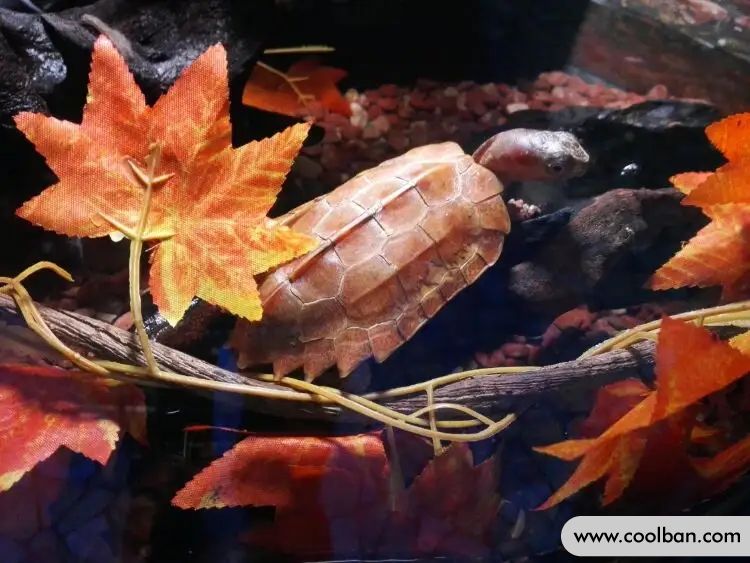How to raise maple turtles
Maple turtles are relatively timid, so they are often difficult to keep. It is easy to refuse to eat if you are not careful, but maple turtles who are familiar with the breeding environment are still very good at interacting with people, so this is a turtle that is not suitable for novices.
Newly bought maple turtles should be placed in a cardboard box or other container, covered with wet sand, and placed in a drinking bowl in a dark corner. Feed a variety of food every day, do not alarm the turtle before feeding, so as not to refuse to eat.
The breeding environment of maple turtles
For maple turtles, whether the environmental arrangement is reasonable is the key to successful breeding. Wild tortoises have high requirements on the environment and need quiet and hidden corners to adapt to the environment. That said, try not to disturb the maple turtles for some time after they arrive home.
Maple turtles are small in size and weak in adaptability. Under artificial feeding conditions, feeding is difficult and the survival rate is low. Newly introduced maple turtles should be placed in dry cardboard boxes or containers with sand and drinking bowls. Feed a variety of food every day, do not alarm the turtle before feeding, so as not to refuse to eat.

1. Use of sand
Maple turtles are semi-aquatic turtles. When artificially raised, it should be raised on sandy soil with a thickness of 3-5 cm and replaced once a month. Turtle houses can also be arranged in a semi-shallow and semi-sand pattern, but all must be topped with sand in winter (except for heating and feeding). The sand can be wet in summer, and it should be dry in early spring and late autumn.
2. Daily environmental management
Maple turtles like warmth, but are afraid of cold. During the breeding process, the terrain is higher. Keeping a diary that records various conditions on a daily basis, especially temperature and feeding conditions, is the key to a good ground turtle. Only by mastering the living environment temperature and feeding conditions of tortoises can you take correct preventive measures for tortoises. For example, when the temperature is low, it should be heated in time; if the turtle stops eating, it is necessary to consider whether the turtle is sick or the turtle house is moved, food replacement and other factors.
3. Pay attention to winter feeding
Healthy maple turtles can hibernate naturally. Put the maple turtle on the sand and the turtle burrows deep into the sand. The surface of the sand is covered with a warm object such as a quilt or straw. Check once a week. Over the next year, the quality of the turtle's recovery will directly affect the turtle's health. The newly recovered soft-shelled turtle should not be fed in large quantities, but should be fed in small amounts, while paying attention to changes in temperature. Weak and frail maple turtles can be raised by heating, raising the ambient temperature to about 25 °C, and normal feeding and management.

Raising and food selection of maple turtles
After the maple tortoise successfully starts to eat, feeding will become easier, because it means that the maple tortoise is already familiar with the environment and enters the state. At this time, as long as he is given a reasonable diet, he can basically survive the dangerous feeding period and will surely survive in the future. More and more like to be close to people.
1. Choice of food
Maple turtles like to eat a variety of live insects. Such as earthworms, crickets, mealworms, etc. Almost any small insect or animal that can move can be fed, but tadpoles, brine shrimp, and turtle food can be avoided. Net owners usually feed on crickets, occasionally feeding silkworms, barley worms, or removing their hind legs. Grasshoppers, small fish, cat food, newborn mice with unopened eyes, etc., and occasionally papaya bananas, oranges, grapefruit or mango, or other sweet and delicious fruits, vegetables can be omitted.
2. Feeding precautions
Provide calcium powder and vitamin supplements every two weeks, sprinkle calcium powder and vitamin supplements on food. Feeding time is mostly in the evening or evening, because this time is more active and the appetite is better. In terms of food intake, each maple turtle can usually eat 2-4 crickets and 2 barley worms at a time, fed 5 times a week. There are also larvae who like to drag food into the water to eat, and drink or soak in the pool in the morning and noon, so the owner needs to change the water every day.
